Deep beneath the otherwise ordinary Polish town of Wieliczka, you’ll find a showstopping subterranean spectacle of tunnels, chapels, lakes and sculptures, where almost everything is made from salt.

The extraordinary underground world can be found inside the Wieliczka Salt Mine, a former mine that dates back to the mid-13th century.
By the time the mine stopped excavating the mineral in 1996, it had grown into a vast labyrinth encompassing 287km of tunnels and 26 shafts, spread out over nine levels to a depth of 327km.

In 1978, the mine was designated a UNESCO World Heritage Site, alongside Kraków’s Old Town and Wawel Hill – one of the first sites in the world to be given the distinction.
Today the mine is a visitor attraction and museum, where you can explore two per cent of its sprawling network of tunnels.

I’d booked myself onto the Tourist Route, a guided tour that takes visitors around the top three levels of the mine.

After gathering outside the entrance, our group made our way down to the first level, where we soon came across a series of displays that showed how the mine used to work.
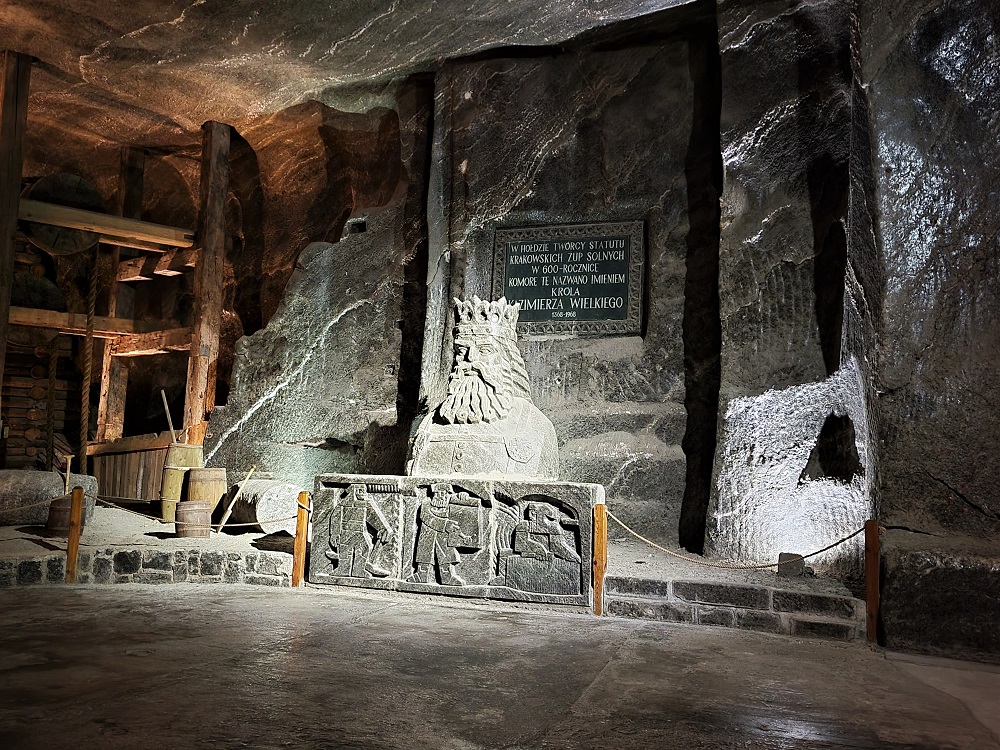
Along the route, there were sculptures commemorating various people who had links to the mine.
These included:
- the astronomer Nicolaus Copernicus, who visited in 1493, one of the first tourists to do so
- King Kazimir the Great of Poland (above), who set out the laws that governed salt mining in Poland in 1368
- St Kinga, the mine’s patron saint (below).
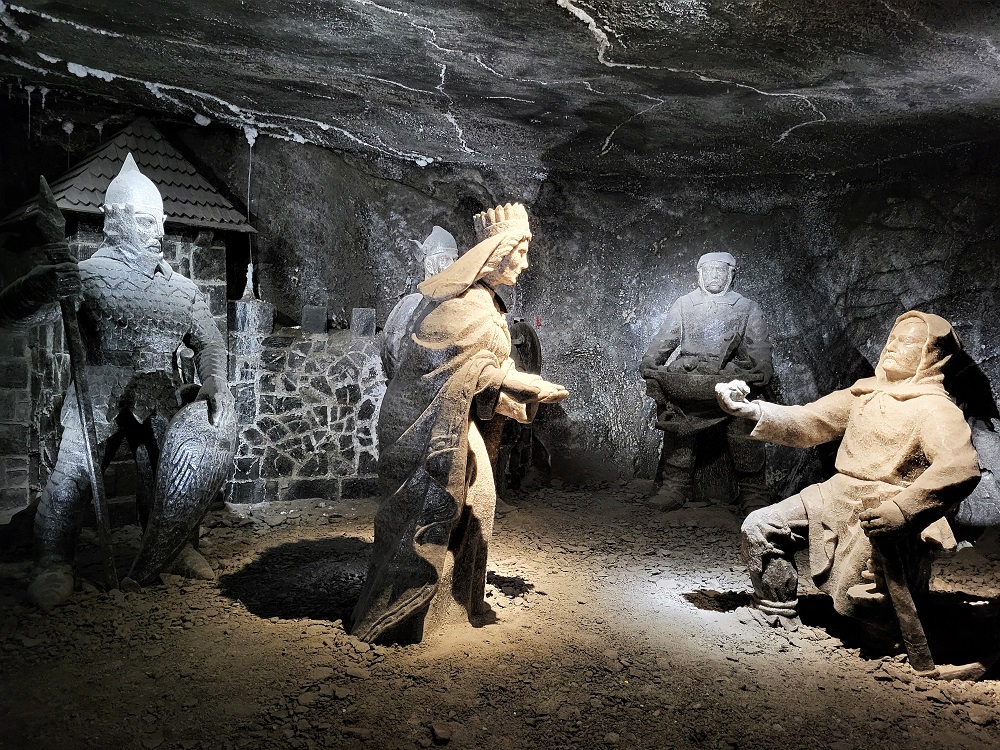
Legend has it that St Kinga, the wife of Boleslaw V the Chaste, Duke of Sandomierz, kick started Poland’s lucrative salt trade in the 13th century when she discovered rock salt deposits in the area.
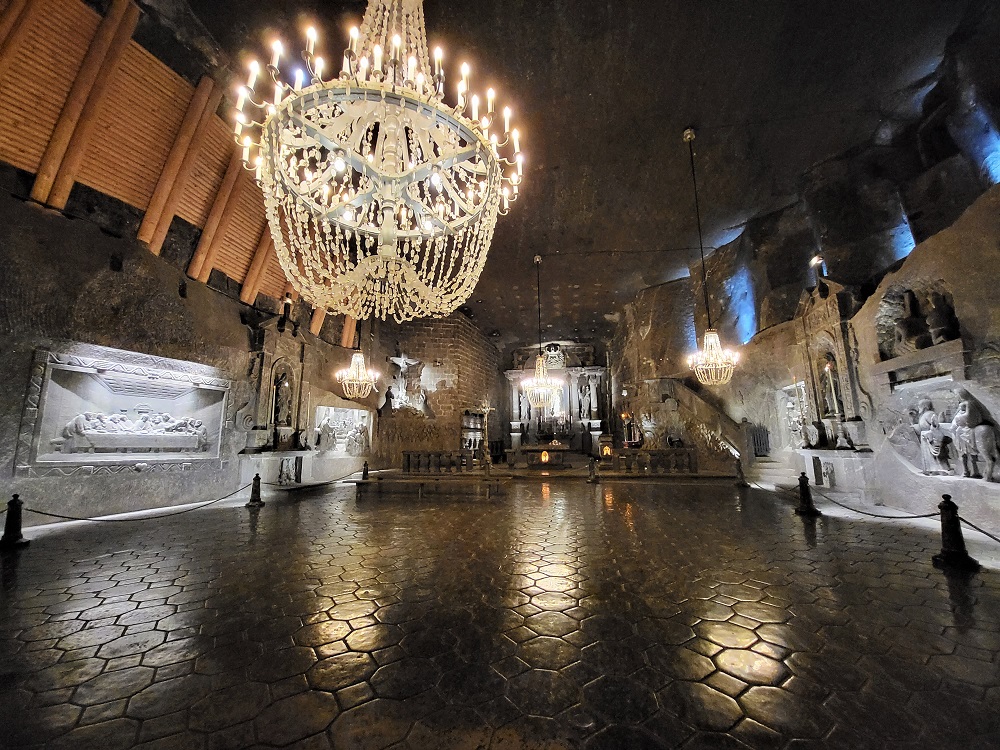
Alongside the statues and displays, the mine also boasts four chapels, the most spectacular of which is St Kinga’s Chapel (above and below).
The cavernous chapel is decorated with intricate carvings (including a replica of Leonardo da Vinci’s The Last Supper, above on the left), decorative features and chandeliers, and is strikingly beautiful.

One of the most incredible things about the chapel, and the salt mine as a whole, is that almost everything you see is made from salt.
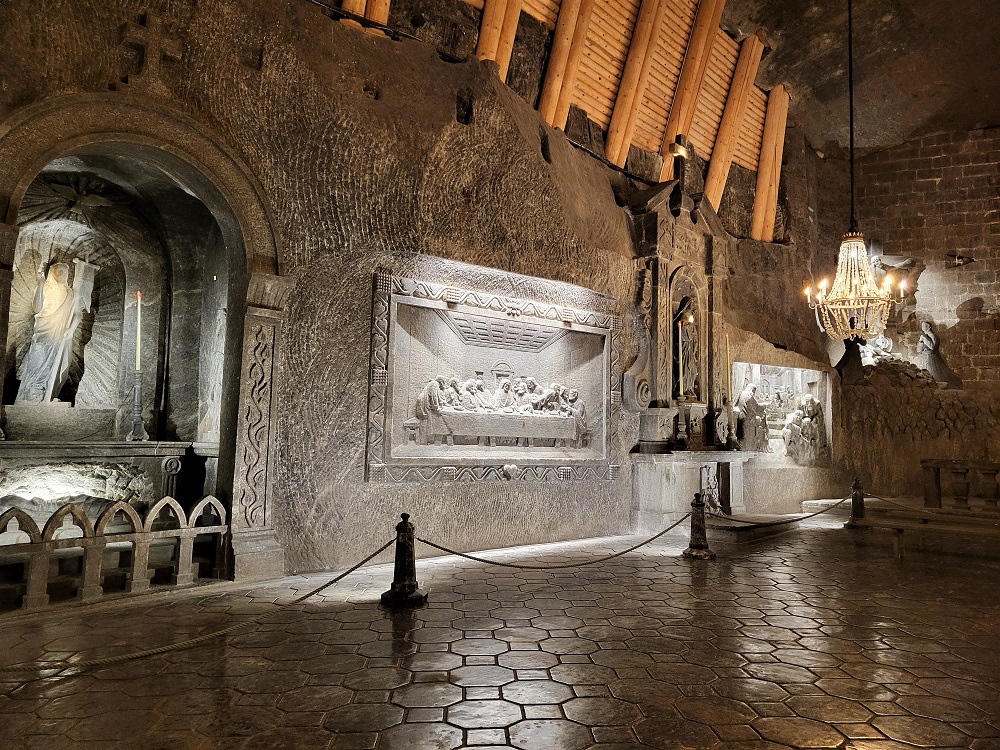
The floors, the ceilings, the walls, the sculptures have all been carved from the salt deposits – even the chandelier is made from salt!

It’s hard to fathom that almost everything in this subterranean chamber is made from plain old sodium chloride. It’s a breathtaking sight and an extraordinary work of art.

After spending a little while taking in the delightful scene, we continued our tour by visiting another of the mine’s jaw-dropping features – an underground pool.
The huge salt water lake is mesmerising and I was struck by the vivid colour of the water.

The photogenic scenes kept coming as we moved on to a tall chamber that was dominated by wooden scaffolding and a gorgeous chandelier (above).

From there, it wasn’t long before we found ourselves admiring another picturesque salt water pool (above).
This one had the added bonus of a canal, which had been used in the past to ferry visitors around the mine.
The two-hour tour ended in yet another enormous chamber, the highlight of which was a small art exhibition (below).

The Wieliczka Salt Mine is marvellous and well worth visiting if you’re in Kraków.
My only criticism is that there were around 30 people on our guided tour, which according to our guide, was a small group.
At times, I found it difficult to see some of the sights because others in the group would crowd around the displays, only moving when it was time to go on to another part of the mine.
I wouldn’t have liked to be on a tour with a bigger group as I think you’d really struggle to see everything.

After finishing the tour, you have the option of extending your visit with a one-hour guided tour of the Museum Route.
Of the 30-odd people on our tour, I was surprised to find only me and a guy from Canada wanted to carry on.
Not that either of us was complaining, as we essentially had a private tour of the museum.

The museum was home to displays that covered different aspects of the mine’s history, including clothing, paintings and tools.
There was also a small, fascinating exhibit about the geology of the salt deposits.
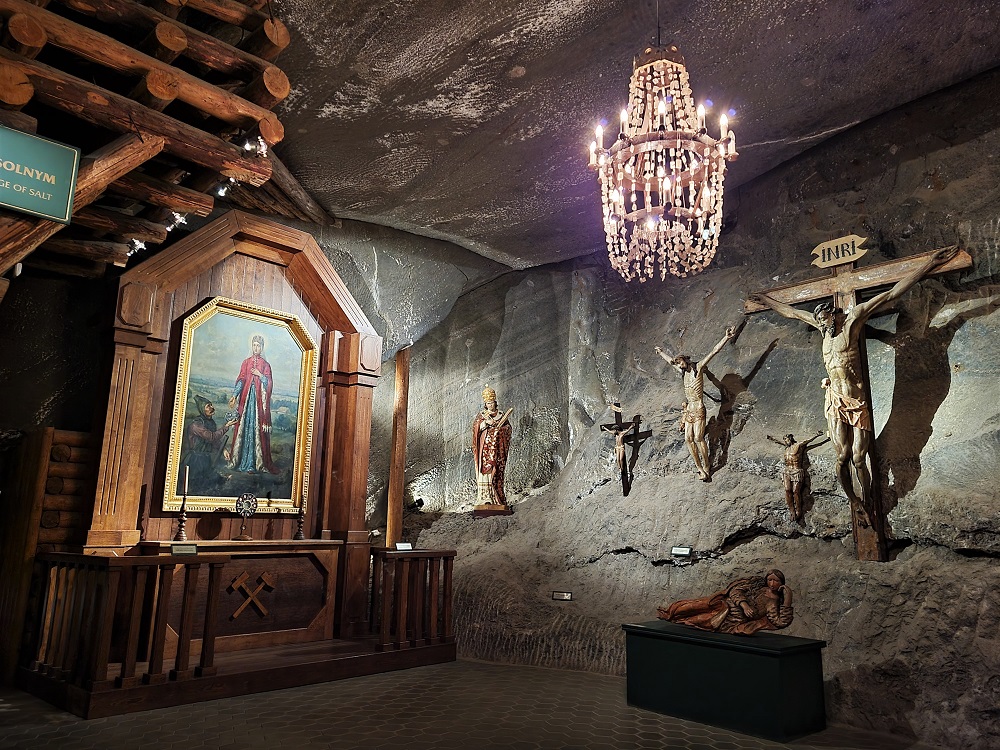
I was really glad I’d decided to join the tour, because the interesting and informative museum added context to what we’d seen along the Tourist Route.

The only downside was that we were whisked through at breakneck speed, which meant we didn’t always have time to look at the exhibits and read the information, which was a shame. But what we did get to see was fantastic.
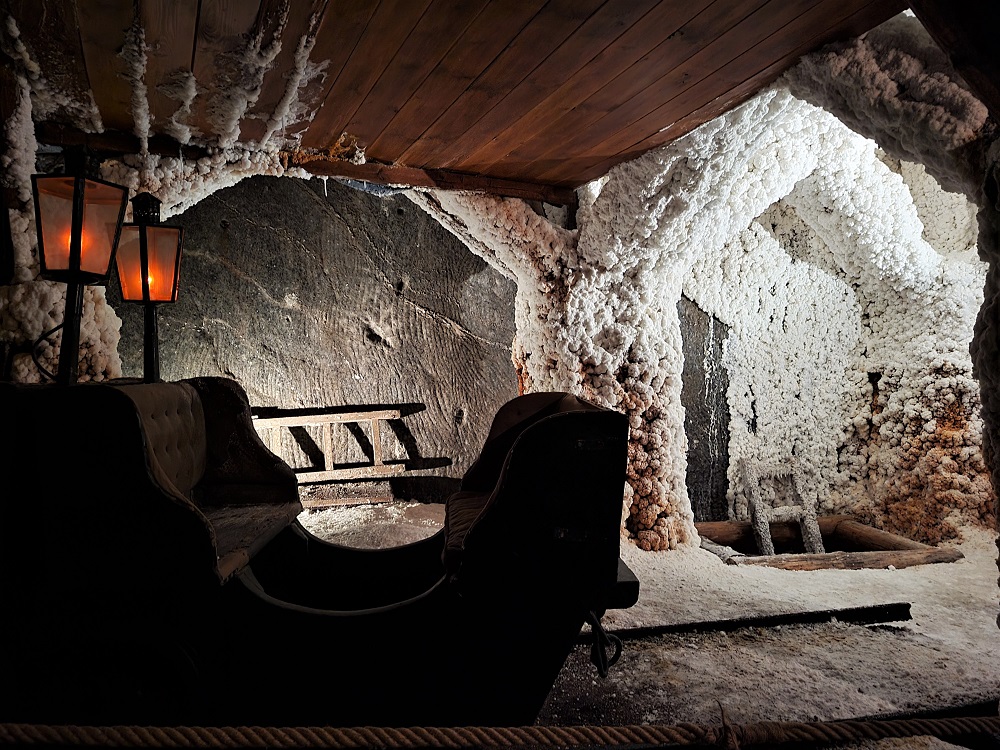
At the end of our tour, our guide took us back to the surface and I was a little disorientated as we came out in a different place to where we began.

I decided to head to the centre of Wieliczka to take a look around the town (above).
There wasn’t a huge amount to see as many of the shops and cafés were closed.

But I found a small restaurant, Pierogarnia Dzien Dobry, that was open and popped inside for lunch, where I discovered I was the only customer.

The restaurant specialised in pierogis and I enjoyed a hearty plate of the traditional dumplings (above).
It was a fab and tasty way to end a memorable day out in Wieliczka.

A most unusual and remarkable place. It’s great that it has been preserved as a museum.
LikeLiked by 1 person
It’s an incredible place and it’s fantastic it lives on as a museum.
LikeLiked by 1 person
What a neat place to visit! I still can’t get my head around the fact those intricate chandeliers are made from salt. A tour with 30 people isn’t a small group in my books either. Glad the second leg of your tour wasn’t quite so busy!
LikeLiked by 1 person
It’s a fascinating place! The things they’ve carved from the salt are incredible. The museum tour was great and being just the two of us along with the tour guide, we had the place to ourselves.
LikeLiked by 1 person
AMAZING! What a discovery. Thanks for sharing. Mel
LikeLiked by 1 person
Thanks Mel! It’s an incredible place and so unusual.
LikeLiked by 1 person
I have always wanted to visit this Salt Mine and it’s on my list for when I eventually get to Poland. it’s crazy what they’ve made out of salt!!!
LikeLiked by 1 person
It’s a little touristy, but well worth a visit when you make it to Poland. I was blown away by what they’d made from the salt, it was fascinating to see.
LikeLike
Wow, that is incredible! Of the underground tours Ive taken this is more amazing than all of them combined. I cant get over the detail everywhere. 🙂
LikeLiked by 1 person
Thanks Meg 🙂 It’s certainly the most unusual underground tour I’ve ever been on. I was amazed by how much there was to see and how the detailed the statues and carvings were.
LikeLiked by 1 person
What an impressive salt mine! It’s pretty neat how everything, including the chandelier in the chapel is made from salt. The underground pool looks beautiful!
LikeLiked by 1 person
Thanks! It’s really cool how much had been carved from the salt and so clever. The people who carved them were so talented. The underground pools were lovely.
LikeLiked by 1 person
It’s quite an amazing place isn’t it?! And to think of the workers who spent so much of their lives down there. I agree with you about the large groups. There were about 30 in our group too and it felt much too large.
LikeLiked by 1 person
It’s absolutely fascinating, I couldn’t quite wrap my head around all that the miners had created down there. It’s an incredible achievement. It’s a shame the groups are so big, but I guess that’s to be expected with such a popular attraction.
LikeLiked by 1 person